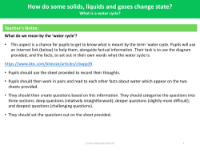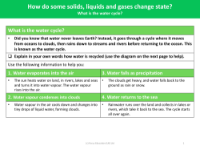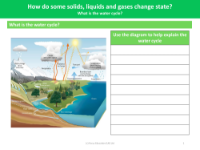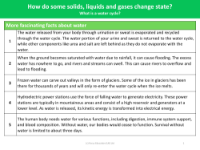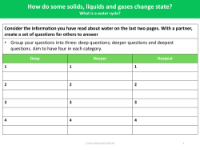What is the water cycle? - Presentation
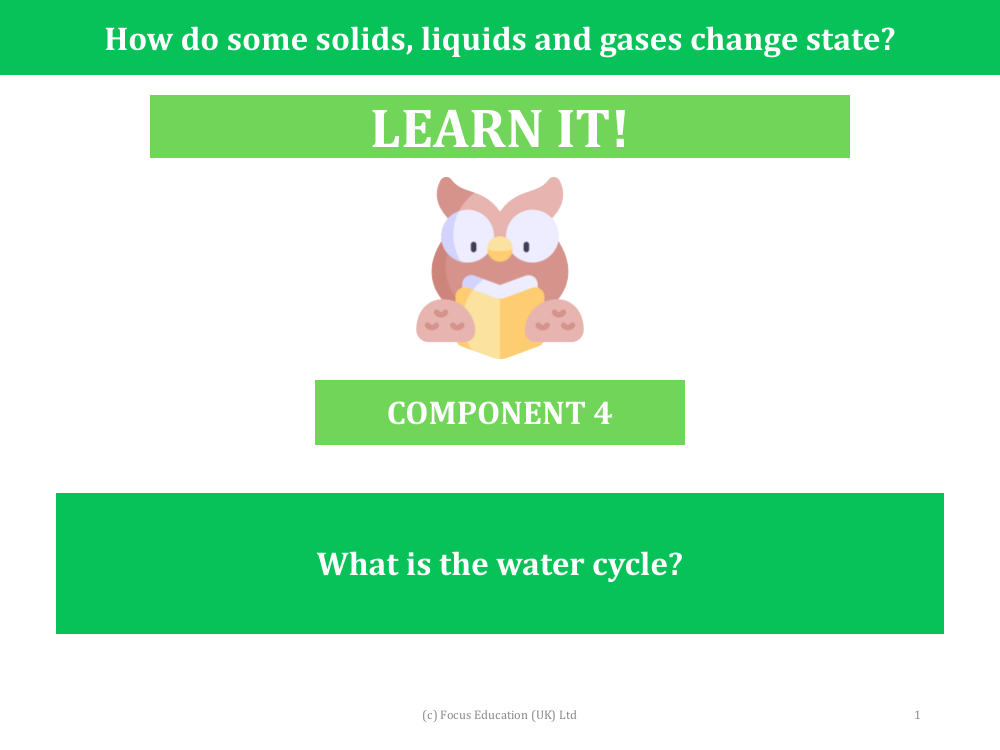
Science Resource Description
The water cycle is a continuous process through which water circulates around the Earth, changing states between liquid, solid, and gas. It begins with evaporation, where the sun's heat turns water from oceans, rivers, and lakes into water vapour that rises into the air. This vapour then cools and condenses to form clouds, which are made up of tiny droplets of liquid water. When these clouds become heavy, the water falls back to Earth as precipitation, such as rain or snow. Once on the ground, this water travels over land, collecting in lakes and rivers, and eventually makes its way back to the sea, ready to start the cycle anew. This process is crucial as it recycles Earth's water supply, ensuring that the same water that existed millions of years ago is still in use today.
Understanding the water cycle also involves recognising how water exists in different forms and states. Water can be a liquid, as we see in our daily use, a solid when it freezes into ice, or a gas when it evaporates into water vapour. Fascinating facts about water reveal that humans are composed of about 75% water, and though 97% of the Earth's water is in the oceans, only 1% is available for drinking. The water cycle is essential for various ecological and human needs, such as supporting the immune system, creating electricity through hydroelectric power stations, and even sculpting the landscape through the formation of glaciers. It is a natural phenomenon that has been recycling water on our planet for millions of years, making it possible for life to thrive.
